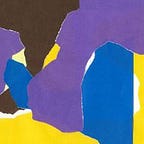https://www.metmuseum.org/art/collection/search/345836
2. three-layer cycle and control between layers, emergency reversal
Let’s consider the inter-layer control direction and hierarchical structure in a three-layer cycle. We will explain with the example below. Since democracy is the people’s sovereignty, the government is (or should be) controlled by the people.
Thus, the direction of the arrow representing control is the “people” to the “government.” However, this is the same as the substantial two-tier structure of the tripartite separation of powers.
The “world” is the top layer (meta-layer) of the three-layer structure described above. The “world” restricts and influences people’s lives in several ways, such as trade restrictions and wars due to the deteriorating international situation and the impact on daily life due to disasters and resource depletion. That is why the direction of the arrow (the direction of the arrow that conveys the control signal) is usually the “world” → the “people.”
The “Government,” in turn, is the lowest (object layer) within the three-layer structure. Nonetheless, the “government” can employ a great deal of concentrated power and a large budget, which individuals and the private sector cannot do. It can intervene in the “world,” the top layer, by interfering in international affairs through diplomacy and military power, building dams and breakwaters, and regulating emissions. The direction of the arrow is, therefore, the “government” → the “world.”
These directions of arrows lead to the endowment of a “three-layer cycle” in which the three layers of “world,” “people,” and “government (legislative, administrative, and judicial)” proactively control each other, as shown in the figure below.
It has the overlapping structure of control and controlled, meta-level and object-level, like an infinite staircase. We can express the mutual control structure in a situation where nothing is “external” or “meta of meta.” Whether this situation is ideal or not is debatable.
The three-layer cycle makes it possible to express a state where there is no king, no outside, and no meta of meta. This is because it has a structure of cycling hierarchical relationships (control and controlled relationships), where “locally the hierarchical relationship between meta and object is determined, but not as a whole. However, this structure is only possible when the direction of the control channel (the direction of the arrow) is consistent.
In exceptional cases of emergency, it may be appropriate to reverse the direction of the arrows representing the control channels. For example, in the Covid-19 pandemic in 2020, the government needs to impose restrictions on people’s activities, curfews, and wearing masks.
At that time, two parties, the “government” and the “world,” will point their arrows at the “people.” In this case, the cyclical structure of control in the three-layer cycle breaks down because the people become the “one-sided weak party” = the layer that is only controlled.
In this case, the “government” becomes a “king” that no one can constrain. The “government” would have a unilateral domination relationship of “government” → “people, world” if one considers the people and the world as one entity. A substantial two-layer structure emerges. At the same time, if we focus on the “people,” we can interpret that the “people” are dominated by the combined existence of the “government and the world.” In this view, too, there is a two-layer structure: “government, world,” → “people.” Either way, the circulation-based mutual constraint will collapse.
(left: “government” →“people, world”), (right: “government, people” →“world”)
Historically, these temporary imbalances in the division of power have tended to persist. Various corruptions of power have resulted from this tendency. We will deal with this issue in the following article.
Credits: Original idea by Asaki NISHIKAWA, Draft written by Toshihiro FURUYA, Drawing by Yoshimi KIKUYA, Simultaneous editing by VECTION
